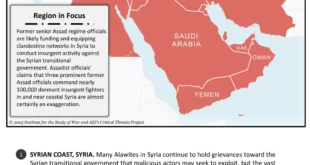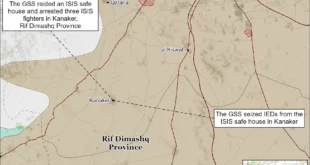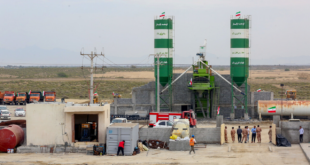Despite more than forty years of living under a rigid and repressive theocratic regime, Iranians are not people to take government failure or flagrant abuse of power lying down. Time and again they have demonstrated a willingness to stand up and be counted, defying the determined efforts of the state’s security forces to suppress any show of dissent.
At the moment Iran is suffering the effects of a drought described as the worst in 50 years. According to the Iranian Department of Water and Sewerage, at least 110 Iranian cities have been struggling with cuts in water supplies during the summer of 2021. The crisis has devastated agriculture and livestock farming, and led to electricity blackouts. The root cause of the water and power failures, according to protesters, is long-standing government inefficiency and corruption rather than the drought.
They point to the worst-affected area – the oil-rich province of Khuzestan in the south-west of the country. Here the drought has only exacerbated problems faced by Khuzestan for decades. The province is home to a large Arab minority who have repeatedly complained of being left behind by the Iranian regime. Khuzestan residents maintain on social media that the province has never truly had drinkable tap water, and that they have had to buy their water or take it from the rivers, many of which have now dried up. Lawyers have said that Khuzestan’s problem stems from the illegal theft of water from river forks in the region. Power outages have exacerbated the crisis, since many people use electricity-powered pumps to get water inside their homes.
Khuzestan is where most of the public outbursts of anger have occurred, but protests at the government’s apparent inability to deal with the situation have broken out across the nation including the capital, Tehran. The heavy-handed action of the security forces has often converted these demonstrations into riots resulting in at least eight deaths, according to Amnesty International..
“Video footage verified by Amnesty,” the organization reports, “… and consistent accounts from the ground, indicate security forces used deadly automatic weapons, shotguns with inherently indiscriminate ammunition, and tear gas to disperse protesters.”
Despite state-imposed internet restrictions, numerous videos have come out of Khuzestan in which gunshots can be heard and tear gas seen in use. In some videos protesters are shouting at baton-wielding security forces clad in black, riding motorcycles.
There are many occasions in the recent past when public protest in Iran has moved past the immediate cause of complaint into a general attack on the government. In 2009 the patently manipulated re-election of Mahmoud Ahmadinejad as Iranian president gave rise to an upsurge of popular anger. Iranians took to the streets in their millions in what came to be known as the “Green Movement” condemning the government for election fraud, and demanding the removal of Ahmadinejad and the holding of new elections.
Iran was in turmoil again in January 2018. At first the nationwide rallies centered on the ever-rising food and commodity prices. This soon morphed into opposition to the regime in general and the Supreme Leader in particular. Especial dissent was voiced against the vast sums expended in the Syrian civil conflict, and Iran’s military and logistical support for Hezbollah in Syria, for the Houthis in Yemen and for Hamas in Gaza. The cost of these foreign adventures was seen as being at the direct expense of the Iranian population.
In 2019, nationwide anti-government demonstrations followed an abrupt tripling of petrol prices. Amnesty International said at least 208 people were killed during those protests
The effect of then-President Trump’s withdrawal from the Iranian nuclear deal in May 2020, and further US sanctions, was a further blow to the economy. The effect on normal household budgets was catastrophic. On June 25 Tehran’s grand bazaar was shut down as merchants joined street protests, and thousands defied the riot police trying to quell the rebellion. Other big cities joined Tehran. Protesters carried all manner of slogans. Some called for the Supreme Leader to resign, some chanted “Death to the liars” and some called for the IRGC the all-powerful Guard Corps,to leave the country, The worst, from the Supreme Leader’s point of view, were the prominently displayed signs: “Death to the dictator.”
Opposition to the government has hardened during the current water crisis. Nostalgic chants of support for the previous Shah, on the lines of “Reza Shah, bless his soul” have been reported from a variety of public protests. Camera-caught videos, by their nature unverifiable, have been making their appearance on social media. One is said to show demonstrators in the town of Aligudarz chanting slogans against Khamenei. A short video posted on Twitter by New York Times journalist Farnaz Fassihi showed people at a Tehran metro station chanting “Death to the Islamic Republic”; another showed women chanting “Down with the Islamic Republic”.
This evidence of a popular groundswell of anti-regime sentiment seems to have shaken the leadership. They must have decided to try to placate the populace. On July 22, outgoing President Hassan Rouhani went on television not to condemn the protests, but to assert that Iranians have “the right to speak, express themselves, protest and even take to the streets, within the framework of the regulations”.
The next day Supreme Leader Khamenei reiterated that message.
“The people showed their displeasure,” said Khamenei to state media, “but we cannot really blame the people, and their issues must be taken care of.” He assured the nation that: “Now, thank God, all the various agencies, governmental and non-governmental, are working [to resolve the water crisis]”.
Both messages must have been delivered through gritted teeth.
The Iranian regime has been severely shaken by a combination of adverse circumstances including economic breakdown resulting from the US sanctions, mounting popular dissatisfaction with the government’s foreign and domestic policies, the Covid pandemic, and now water shortages exacerbated by severe drought. Popular sentiment in favor of an end to the regime and even a restoration of the monarchy is growing. Where will it all end?
 Eurasia Press & News
Eurasia Press & News


